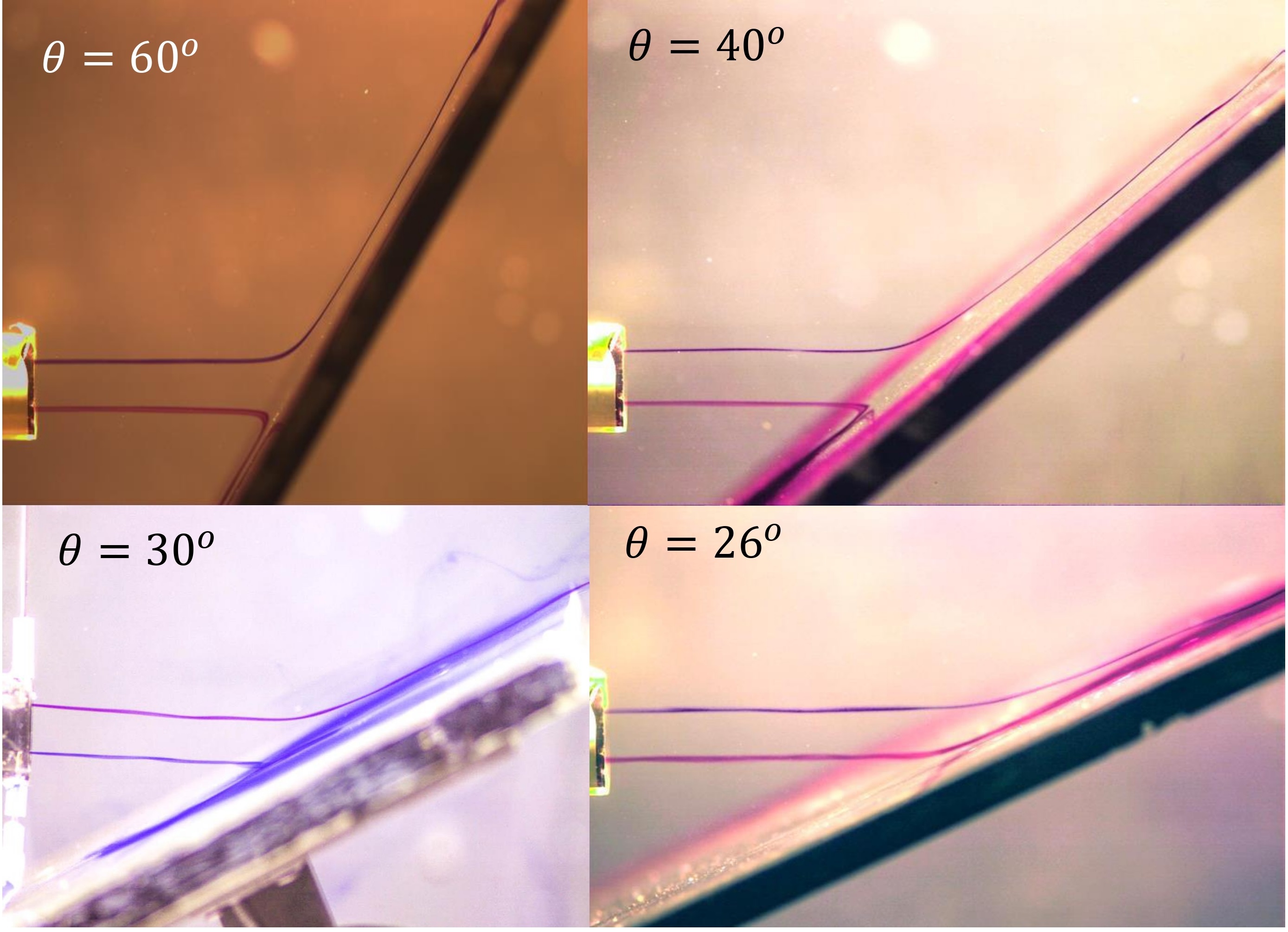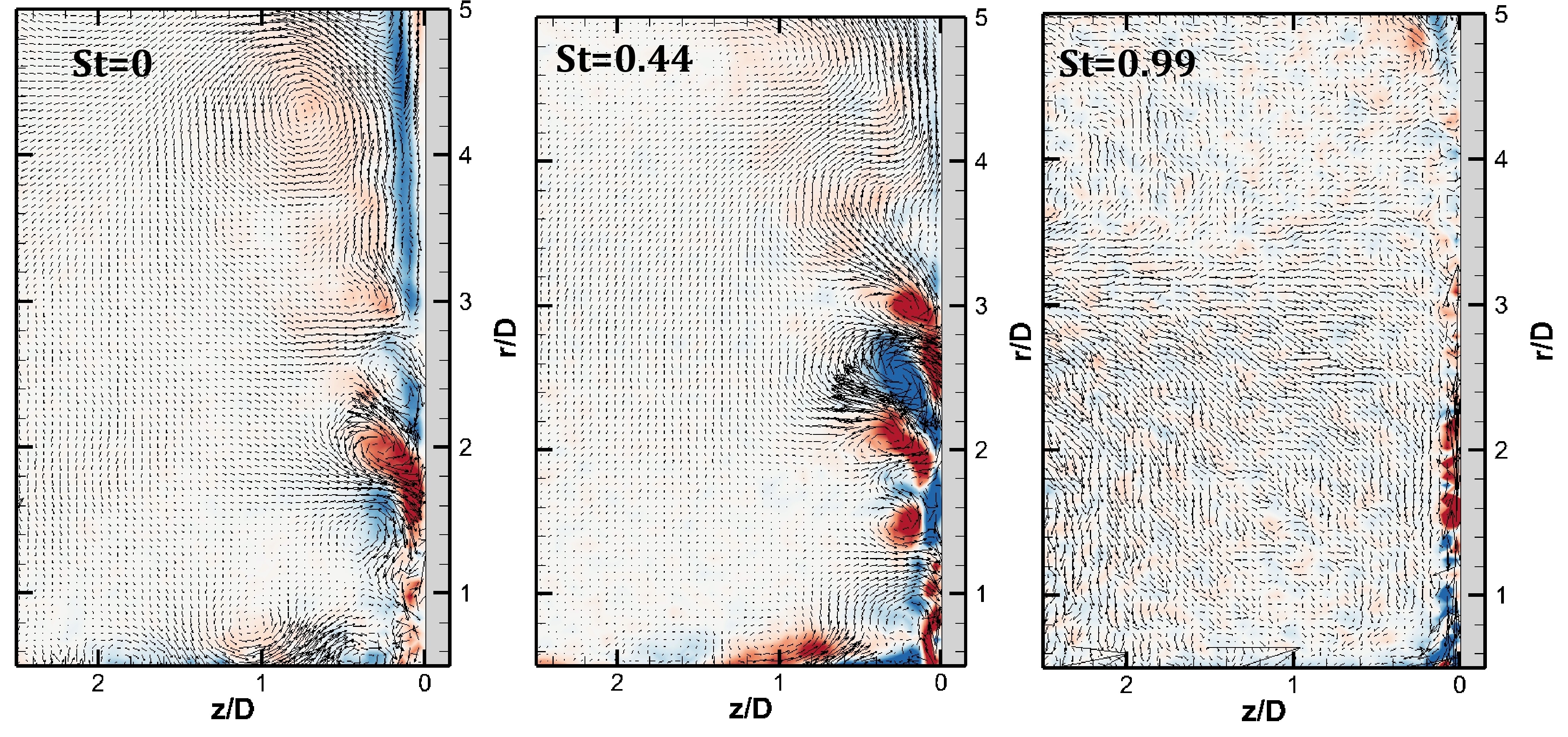Flow Characteristics of Normal and Oblique Jet Impingement
Impinging wall jets are effectively used in heat transfer applications such as cooling of turbine blades, electric motors, thermal management of battery systems, among others. Jet impingement cooling proves to be more efficient than other techniques in terms of providing a higher heat transfer rate and localised cooling at the hotspots. Since convective heat transfer is linked to the turbulent characteristics of the flow, any mechanism which can induce turbulence in the flow will influence the heat transfer rate.
In our work, we employ the Particle Image Velocimetry (PIV) technique to experimentally study the effect of employing external pulsations on jet impinging at various angles on a target surface. A solenoid valve was used to impose periodic fluctuations at different frequencies on the mean flow, and its effects were measured downstream of the nozzle exit. Different characteristics of the flow were compared by changing the flow pulsation in terms of non-dimensionalised frequency (Strouhal number). The pulsations have a strong effect on the flow: Compared to a steady jet, the pulsed jets were observed to induce flow instabilities both in the free jet and the wall jet region, resulting in a shortening of the potential core region, higher jet width, faster decay of the centreline velocity in the free jet region, faster decay of the maximum wall jet velocity, and enhancement of the turbulent characteristics.
 Detection of critical impingement angle using the dye visualization technique
Detection of critical impingement angle using the dye visualization technique
An enhancement of the wall-normal turbulence intensity of about 150% was observed compared to the steady jet at the same Reynolds number of the flow. It was observed that an optimal pulsation frequency exists (St = 0.44) for which maximum turbulence is generated in the wall jet region. The primary and secondary vortices shift upstream due to the pulsation and are observed to form nearer to the stagnation region for St = 0.44. Further, we conducted a quadrant analysis, which showed an enhancement in the ejection phenomena at this frequency, resulting in the enhancement of the jet-ambient interaction. Increasing the pulsation beyond this frequency leads to a reduction in the turbulent characteristics of the jet, and it starts to behave similarly to the steady jet when St > 0.9. The key highlight is that the formation and evolution of the vortical structures at different regions of the plate can be controlled through different pulsation frequencies, through which heat transfer can be enhanced at desired locations as per the system requirements.
 Flow control using external pulsation in impinging wall jet flows
Flow control using external pulsation in impinging wall jet flows
The effect of pulsation is further extended to the jet impinging on the plate at different angles. Oblique impingement is sometimes needed due to limitations in the hardware design. The inclination of the jet breaks the symmetry of the wall jet, as a larger fraction of the jet deviates along the downhill side upon impingement. This results in a shifting of the stagnation point towards the uphill region. We found that, surprisingly, below a critical impingement angle (, there is no formation of the wall jet in the uphill region. This leads to a dramatic reduction in the heat transfer rate. For the oblique impinging jet, the wall jet corresponding to the pulsation frequency, St = 0.44 showed higher turbulent characteristics both in the uphill and the downhill regions. The effect of pulsations on jet impingement has not been studied before, and these detailed measurements help determine configurations with high heat transfer rates.
